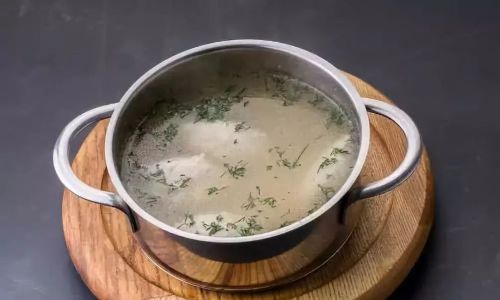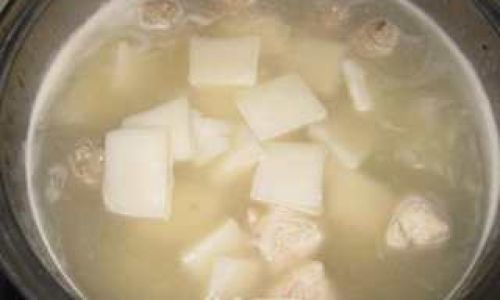Introduction
Making stock is a fundamental culinary skill that every aspiring chef and home cook should master. Stock, often referred to as the “backbone” of many dishes, serves as the foundation for soups, stews, sauces, gravies, and even some risottos and braises. Its rich, flavorful essence can elevate even the simplest recipes to gourmet status. While the process may seem intimidating at first, with the right techniques and understanding, you’ll find that making stock is not only rewarding but also quite therapeutic. This comprehensive guide will walk you through the art of making stock, from selecting the best ingredients to achieving a perfectly balanced flavor profile.
Understanding the Basics
Before diving into the specifics of how to make stock, it’s crucial to understand the basics. Stock is essentially a flavored liquid made by simmering bones, meat, vegetables, herbs, and spices in water for an extended period. The simmering process extracts collagen, fats, proteins, and flavors from the bones and ingredients, creating a broth that is both nutritious and delicious.
There are several types of stock, each with its unique characteristics and uses:
-
Chicken Stock: Made primarily from chicken bones and often includes vegetables, onions, carrots, celery, and herbs like thyme, parsley, and bay leaves. Chicken stock is versatile and can be used in a wide range of dishes.
-
Beef Stock: Prepared using beef bones, often with vegetables, tomatoes, and aromatic herbs like rosemary, thyme, and bay leaves. Beef stock is darker, richer, and has a stronger flavor profile, making it ideal for hearty dishes like beef stew and gravies.

-
Vegetable Stock: Created using a variety of vegetables such as onions, carrots, celery, leeks, and herbs. Vegetable stock is lighter and more delicate, perfect for vegetarian and vegan dishes.
-
Fish Stock: Made from fish bones, heads, and trimmings, with vegetables and sometimes white wine. Fish stock is delicate and should be used in dishes that highlight seafood flavors.
-
Brown Stock: Similar to white stock but starts with roasted bones and vegetables, which adds depth and color to the final broth. Brown stock is often used in richer dishes like risottos and braises.
Ingredients and Equipment
Ingredients:
- Bones and Trimmings: The foundation of any good stock. Chicken wings, necks, and backs; beef knuckle and shin bones; fish bones and heads; and vegetable scraps are all excellent choices.
- Vegetables: Onions, carrots, celery, leeks, and tomatoes provide sweetness, earthiness, and acidity.
- Aromatics: Garlic, shallots, and onions add depth.
- Herbs and Spices: Bay leaves, thyme, parsley, rosemary, black peppercorns, and sometimes more specific spices like saffron or star anise can enhance the flavor profile.
- Water: High-quality water is essential. Avoid using tap water with a strong chlorine taste.
- Acid: A splash of vinegar, lemon juice, or tomato paste helps extract minerals from the bones.
- Optional Additions: Mirepoix (a mixture of finely chopped carrots, onions, and celery), wine, or even a splash of soy sauce can add complexity.
Equipment:
- Large Stock Pot: A heavy-bottomed pot with a capacity of at least 12 quarts is ideal.
- Strainer: A fine-mesh skimmer or China cap for removing impurities.
- Tongs or Ladle: For handling bones and skimming fat.
- Cheesecloth or Muslin Bag: For enclosing herbs and spices to easily remove them later.
- Storage Containers: Airtight containers for refrigerating or freezing stock.
Step-by-Step Guide to Making Stock
Preparation:
- Rinse Bones: Rinse the bones under cold running water to remove any blood or debris. Soak them in cold water for 30 minutes to an hour if you have time; this helps draw out more impurities.
- Chop Vegetables: Roughly chop the vegetables. They don’t need to be precise, as they will be strained out later.
- Prepare Aromatics and Herbs: Peel and crush garlic, finely chop onions and shallots, and tie herbs in a cheesecloth or muslin bag.
Roasting (for Brown Stock):

- Preheat your oven to 400°F (200°C).
- Place the bones and vegetables on a roasting tray in a single layer.
- Roast until they are golden brown, about 30-45 minutes, turning occasionally. This caramelization adds depth and color to the stock.
Building the Stock:
- Place the roasted bones and vegetables in your stock pot.
- Add enough cold water to cover everything by at least 2 inches. Cold water helps draw out more flavor from the bones.
- Bring the pot to a gentle simmer over medium-high heat. Do not boil vigorously as this can make the stock cloudy.
- Once simmering, skim off any foam or impurities that rise to the surface using a skimmer.
Adding Flavor:
- Add the prepared aromatics and the herb bag.
- Stir in a splash of vinegar or lemon juice to help extract minerals from the bones.
- If using, add any optional ingredients like wine or tomato paste.
Simmering:
- Reduce the heat to low and let the stock simmer gently, uncovered, for at least 4-6 hours for chicken and vegetable stock, and 6-8 hours for beef stock. Fish stock should simmer for about 30 minutes to an hour to avoid overcooking and becoming bitter.
- Skim the surface regularly to remove any foam or impurities.
- If the liquid level drops too low, add more boiling water, not cold, to maintain the level.
Finishing:
- After the desired simmering time, remove the pot from heat.
- Carefully strain the stock through a fine-mesh strainer lined with cheesecloth or a clean kitchen towel to remove all solids.
- Let the stock cool slightly, then skim off any remaining fat that has risen to the surface. This can be done more easily when the stock is cool but not completely set.
Storage:
- Ladle the stock into clean, airtight containers.
- Let it cool to room temperature, then refrigerate for up to a week or freeze for longer storage.
- Label the containers with the date and type of stock for easy identification.
Tips and Tricks for Perfect Stock
- Quality Ingredients: Always use high-quality bones and fresh vegetables. The better the ingredients, the better the stock.
- Patience: Simmering time is crucial. Rushing the process will yield a weaker, less flavorful stock.
- Skimming: Regularly skimming the surface of the stock removes impurities and fat, resulting in a clearer, cleaner broth.
- Avoid Over-seasoning: Stock should be lightly seasoned. You can always adjust the seasoning when using the stock in recipes.
- Storage: Properly stored stock can last for months in the freezer, making it a valuable pantry staple.
- Reuse Bones: Bones can be simmered a second time to make a lighter, though still flavorful, second stock.
- Flavor Extracts: Consider making a concentrate or essence by reducing a portion of the stock. This can be used to add intense flavor to dishes.
Conclusion
Making stock is a labor of love that pays off in countless delicious meals. With a well-stocked freezer, you’ll always have the foundation for creating gourmet dishes at home. By following this comprehensive guide, you’ll soon master the art of making stock, transforming simple ingredients into a rich, flavorful liquid gold that can elevate any dish. Happy cooking!





0 comments